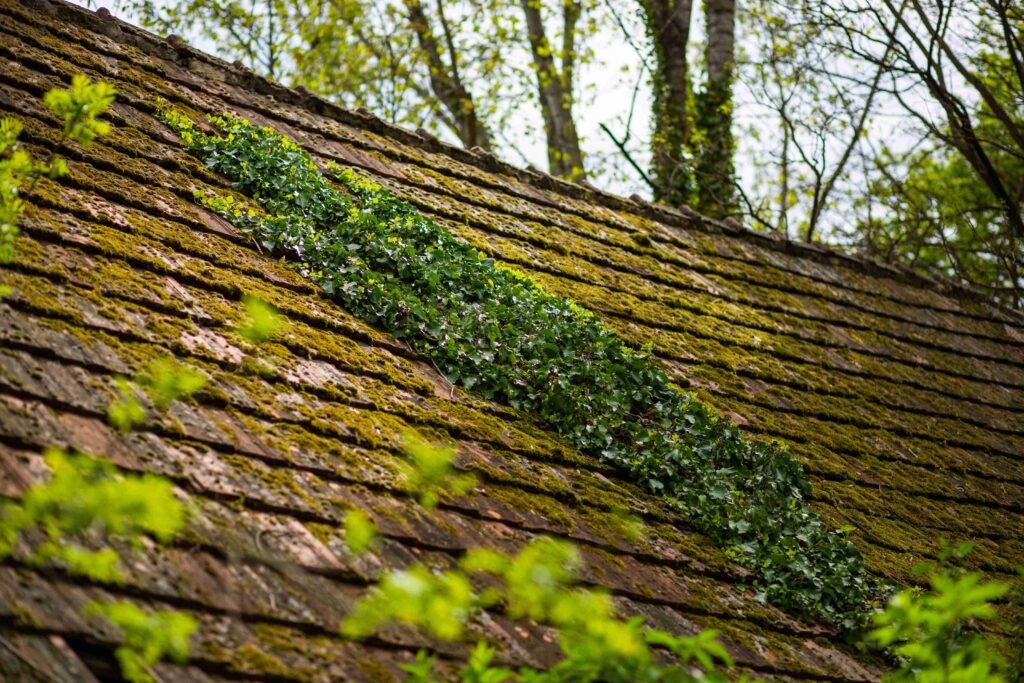- Serving London and surrounding areas
- Work for us

Roof moss may look harmless — even charming — but it’s a silent threat to your roofing system. Over time, moss can trap moisture, damage roof tiles, and lead to costly repairs. In this blog, we’ll explain what causes roof moss, how it affects your roof, and, most importantly, how to prevent it with smart long-term solutions.
Moss thrives in damp, shaded environments. Several conditions can encourage moss growth on your roof:
Excess Moisture: If your roof retains water after rain, especially in shaded areas, moss is likely to take hold.
Lack of Sunlight: North-facing roofs or those shaded by trees don’t dry out quickly, creating an ideal environment for moss.
Organic Debris: Leaves, twigs, and dirt hold moisture and provide nutrients that feed moss spores.
Poor Ventilation: Inadequate attic airflow can increase condensation, raising moisture levels and encouraging moss growth from below.
While it might start small, roof moss can lead to serious issues:
Moisture Damage: Moss absorbs and holds water against your roof, promoting rot in wooden structures and underlayment.
Tile Displacement: As moss grows, it can lift or dislodge tiles and shingles, increasing the risk of leaks.
Blocked Drainage: Moss buildup can block gutters and downpipes, leading to overflowing water and structural damage.
Reduced Roof Lifespan: If left untreated, moss can significantly shorten the life of your roof and compromise its performance.
✅ 1. Keep Your Roof Clear of Debris
Regularly remove leaves, twigs, and dirt from your roof and gutters. This limits moisture retention and removes the organic matter moss thrives on.
✅ 2. Trim Back Overhanging Trees
Reduce shade by trimming back tree branches. This allows more sunlight to reach your roof, helping it stay dry.
✅ 3. Install Zinc or Copper Strips
These metals naturally inhibit moss growth. Installing strips along the roof ridge allows rainwater to distribute the moss-killing ions down the roof surface.
✅ 4. Improve Roof Ventilation
Enhance airflow in your attic or loft to reduce moisture buildup beneath the roof. Proper ventilation keeps your roof drier from the inside out.
✅ 5. Schedule Professional Roof Cleaning
Avoid DIY power washing, which can damage tiles. Hire professionals to safely clean your roof and apply moss-resistant treatments.
While brushing off a few patches of moss may seem simple, improper removal can cause more harm than good. Aggressive scrubbing or jet washing can strip protective layers from tiles or loosen them completely. It’s best to call in roofing professionals for safe and effective moss removal and prevention.
Roof moss isn’t just a cosmetic issue — it’s a slow but steady threat to your home. The best defence is a proactive approach: regular inspections, good ventilation, and preventive treatments will go a long way in keeping your roof moss-free.
Whether you need roof cleaning, moss treatment, or a full inspection, our expert team is here to help. We offer safe, effective solutions that protect your roof without causing damage.
📞 Contact us today to book your free roof inspection and keep your roof clean, dry, and built to last.
Monday to Sunday: 6:00 AM – 8:00 PM (Open Daily)
Subscribe to our newsletter for the latest updates and offers.
© [2010 [A&A Roofing]. All Rights Reserved. Designed By Spectrum Media Solutions.